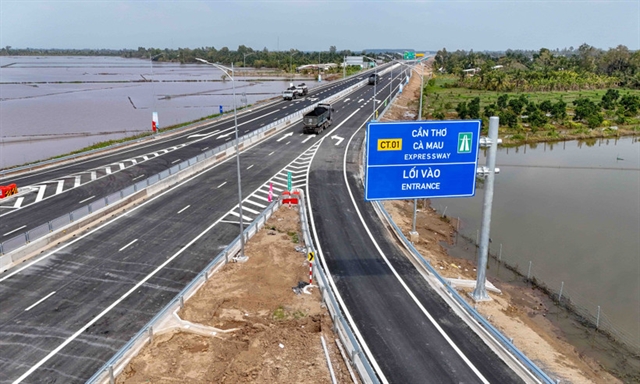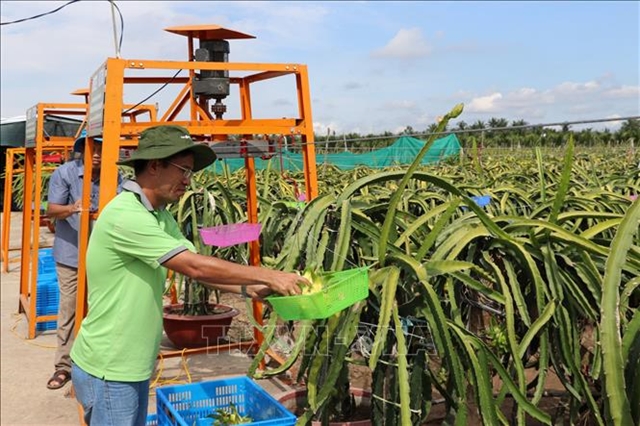 Economy
Economy

 |
| Farmers in the Mekong Delta province of Tiền Giang harvest dragon fruit. VNA/VNS Photo |
TIỀN GIANG – The Mekong Delta province of Tiền Giang, the country's largest fruit producer, has 80 dragon fruit growing area codes in an area of more than 6,140 hectares for export to demanding markets such as Japan, the US, South Korea and Australia.
They are mainly in Chợ Gạo, Tân Phước, Gò Công Tây, and Gò Công Đông districts.
Chợ Gạo District is the largest dragon fruit growing area in Tiền Giang Province with 6,870 hectares, of which, 5,640 hectares are being harvested, the annual output is about of 190,000 tonnes per year.
Chợ Gạo dragon fruit has been granted a collective brand name by the National Office of Intellectual Property.
It has established co-operatives and co-operative groups to bring farmers together to adopt good agricultural practices (GAP) standards and ensure origin traceability.
It has strengthened advocacy activities to advertise the fruit and promote its sales.
In Gò Công Đông District, Kiểng Phước Commune normally faces saltwater intrusion in the dry season which affects rice cultivation.
Trân Nông was one of the first farmers in the commune to switch from rice to red flesh dragon fruit. He used intensive farming methods and produces off-season fruit to harvest about 25 tonnes and earn VNĐ300-350 million (US$12,800-15,000) a year, many times higher than he did from rice, he said.
The price of dragon fruit is high this year and farmers say they are earning high incomes as a result.
Red flesh dragon fruit fetches VNĐ30,000-35,000 ($1.3-1.5) a kilogramme, three times the price 12 months ago.
Income from dragon fruit is high and second only to durian, the province’s specialty fruit.
Nguyễn Tấn Đạt, deputy chairman of the commune, said that to restructure agriculture to cope with climate change and natural disasters, more than 100ha of farmlands in coastal areas had been turned into red-flesh dragon fruit orchards.
The commune planned to increase this to 250ha by 2025, he added.
Tiền Giang, the country’s largest fruit producer, has identified dragon fruit as one of its specialty fruits for its competitive advantages and high export value.
It has taken a number of measures to improve the competitiveness of specialty fruits and ensure they have steady buyers.
These measures have helped sustainably develop specialised dragon fruit growing areas, renovate agriculture production and foster rural development.
Aiming to produce dragon fruit that meets export standards, Tiền Giang province has cultivated over 2,306 hectares of dragon fruit that meet GAP standards, of which, 2,196 hectares are VietGAP certified and 110 hectares are GlobalGAP certified. The province is setting a goal that by 2025, there will be 3,600 hectares of dragon fruit meeting GAP criteria.
It has set up co-operatives with linkages for growing and selling dragon fruit and taught farmers advanced growing techniques to improve fruit quality and produce in the off-season to avoid oversupply during the main harvest season.
It has boosted the use of GAP standards and exported the fruit through official channels to China and other demanding markets.
It has 11 co-operatives that grow and buy dragon fruits and 2,300ha of dragon fruit grown to GAP standards.
It has 5,493ha of dragon fruit with production codes for official export to China and 1,271ha with codes for export to Japan, the US, South Korea, and Australia.
To get a code, a dragon fruit growing area needs to be at least 10ha and adopt VietGAP or other equivalent standards. – VNS




